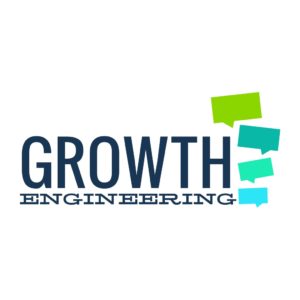3 New Ways Learning Technology Can Save Annual Appraisals
I recently posed a question to my LinkedIn network and I must say, the response was pretty passionate. I asked whether there was any point in annual performance reviews and my audience clearly had some opinions that they couldn’t wait to get off their chests.
So, what was my key take-away from the post?
1. Everyone Hates Annual Reviews
You might have thought that performance reviews are seen as a necessary inconvenience of running a business. Judging from the small sample of responses, it’s not that complimentary. Most people have no love whatsoever1 for annual reviews. They see them as a distasteful residue from the past – the old days of the workhouse and the production line, when you could only keep your job if you screwed enough doodads onto gismos.
That’s just the start of the disdain that annual reviews have earned, with all kinds of nasty words getting hurled around like 'sham', 'meaningless' and even 'horrific'. The annual review institution is thought of as a chore by managers and an obstacle to career progression by everyone else.
2. Well, Maybe Not Everyone Hates Them
All that said, there were a couple of rebels who weren’t afraid to go against the grain. They made the valid point that there needs to be some formal method of managing performance. Without that official process in place, employees don’t get the chance to discuss their aspirations. That’s bad enough, but if a company decides to dispose of the formal review completely, they lose a valuable source of organizational learning.
Although, even among this band of renegades, the consensus was that the annual review process still needs to be supported by ongoing feedback. If you’re wondering why most organizations don’t bother switching to a more continuous process, the answer is pretty clear. This happens because that old, horrific, meaningless sham is just so much easier. Organizations need a simple and intuitive way to continuously monitor performance and capture that data for an annual review.
3. Learning Technology to the Rescue!
Like employee engagement, the debate around annual appraisals has raged for years. Luckily, those savvy developers in the land of learning technology have put their thinking caps on and come up with innovative solutions to deal with the issue. They’ve broken the problem down into its main components and devised a few ways to tackle it.
a. Goals And Key Performance Indicators
In its simplest form, 'performance' boils down to whether or not an individual is achieving their goals. Any system that hopes to reconcile annual appraisals and ongoing performance management needs to be able to track employees' goals. It also needs to be able to align them with departmental objectives and the aims of the wider organization.
This doesn’t just give managers better visibility over the employees’ performance, but it gives these goals meaning. Every employee can see how their contribution is helping the business get to where it needs to go. This kind of visibility is something that most organisations are lacking2. It’s also an important thing to pay attention to, since the majority of employees3 look for meaning in their work. If you want to engage your staff, you need to show them why their job matters.
b. Roles and Competencies
You can’t expect somebody in your marketing department to know how to code a piece of software. Performance reviews take this into account by assigning competencies to roles. For example, accuracy and proficiency with the native language is a crucial competency for a marketing executive. A developer can get away with as many misplaced apostrophes as they like, as long as their code does what it’s supposed to.
On the same token, you can’t ignore the possibility that there’s a secret coding genius wasting their talents in marketing. Performance appraisals aren’t just about assessing competencies and suggesting areas for improvement. They also give managers the chance to put people in the right role for them. You never know what superheroes are hiding away in roles that don’t suit them. After all, Steven Spielberg hired Kathleen Kennedy as a secretary back in 1979 and she’s now the President of Lucasfilm!
A good performance management platform needs to be able to assign employees to roles and track their competencies. It should also let both managers and employees assess the individual competencies and comment on them. By opening this kind of dialogue, the employees have a better idea of what they need to work on and where their strengths lie. More importantly, it gives them regular feedback on their progress, which is another huge factor in engagement.
c. Reviews And Personal Development Plans
You might be wondering how this links to learning technology. Well, here’s where your Learning Maanagement System can perform some honest-to-goodness magic. After 6-12 months of constant attention to Key Performance Indicators and competencies, the manager has a crystal-clear picture of each employee’s performance. When it comes to that once-or-twice-yearly discussion, they can see which areas need the most improvement.
Because this has been an ongoing process, with regular feedback from both sides, the review should hold no surprises for anyone. Instead of spending the time serving up compliment sandwiches, this time can be spent discussing what the employee actually wants from their job. This lets the manager focus on the issues that will improve engagement with the organization, which ultimately has a bigger impact than ticking boxes in a form.
When both parties know what they want, they can plan ways to achieve it. In a typical employee review, the target will be to improve upon one or more competencies. To do that, the employee needs to build their skills and knowledge. By hosting the performance review process on the LMS, the right piece of training material is just a click away. The manager can select the right training to plug the employee’s skill gaps and push it straight to their inbox. In this way, the employees have exactly the tools they need to progress faster in their careers.
Final Word
There’s a strong link between employee training and performance, so it makes sense that the learning platform plays a role in the appraisal process. With the right mix of tools on your LMS, you can make your dream of continual development a reality. More than that, you can keep the advantages of annual appraisals and turn them into something more than box-ticking exercises.
Rather than being a necessary evil that employees and managers dread, these appraisals can give your organization valuable employee feedback. This helps you get better value from your LMS too. It can be used, not only to train individuals, but to gather the kind of data that can help make decisions on the shape of the entire organisation.
If you have your own take on the annual performance review, I'd love to hear your thoughts. You can leave your comments on the LinkedIn post here.
References
- Why the Annual Performance Review is Going Extinct
- New Study: Employees Often Don't Know How Their Job Affects The Bottom Line
- Engagement, Retention, and Culture now the #1 Issues in Talent and HR









